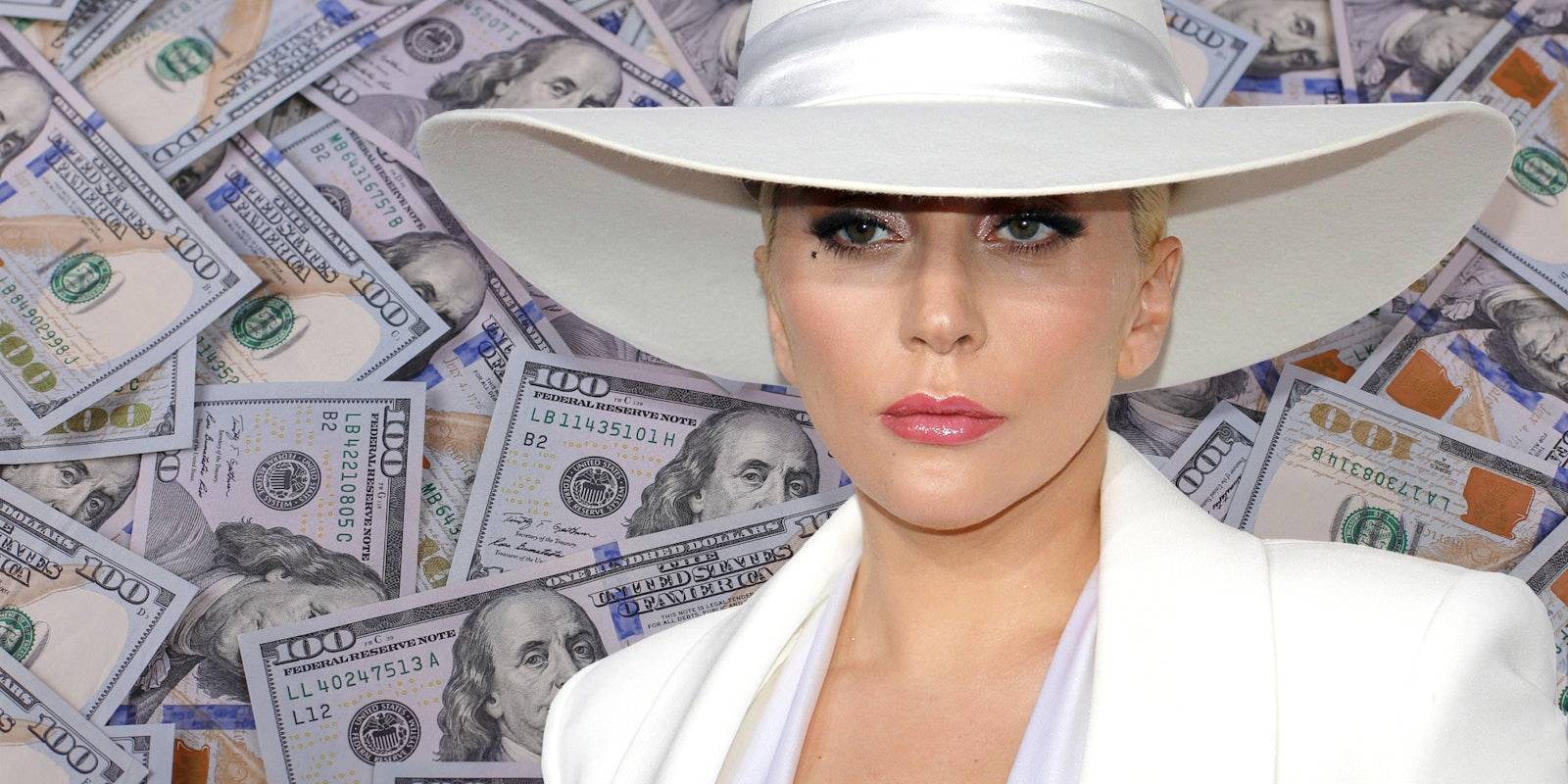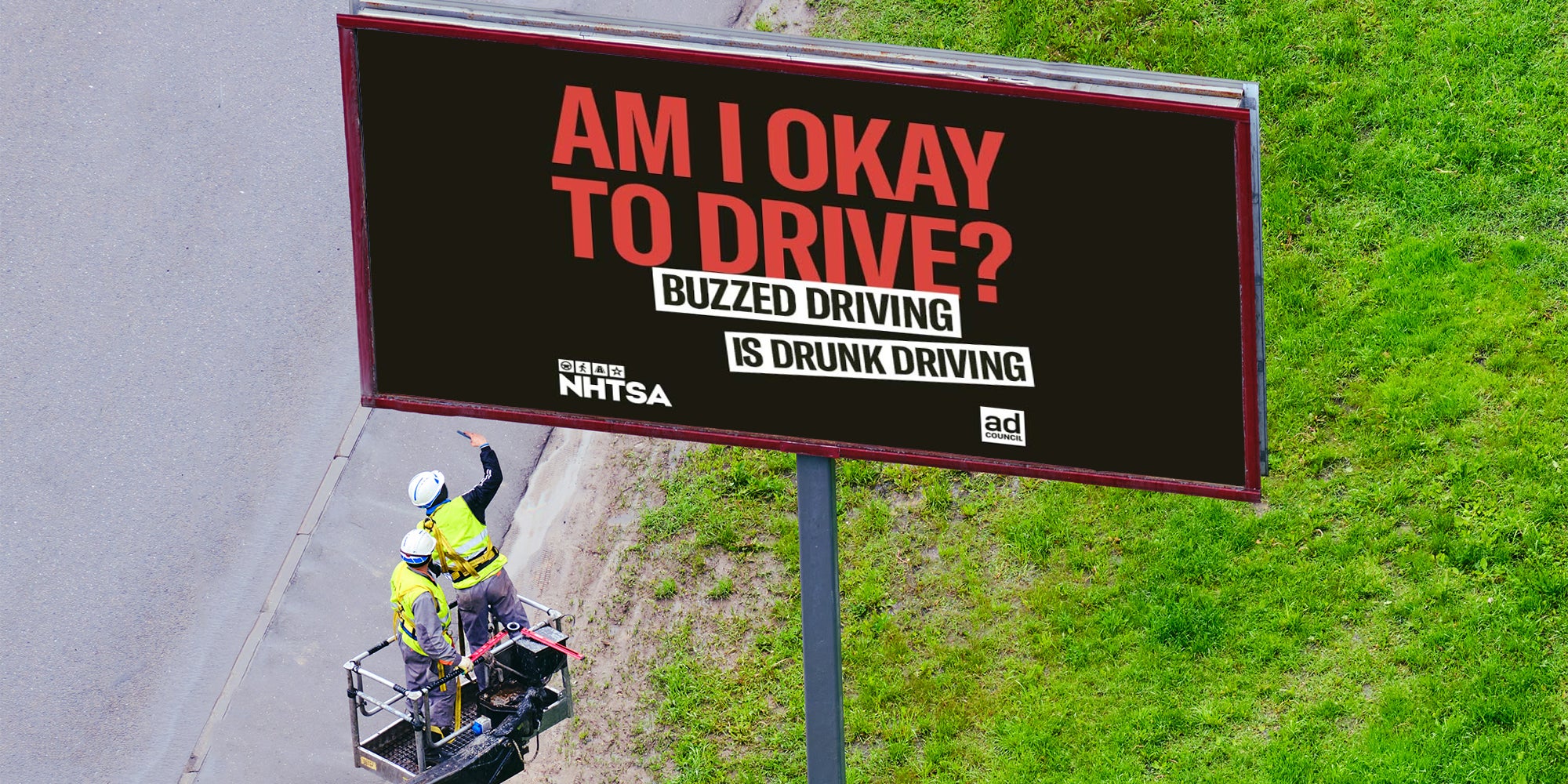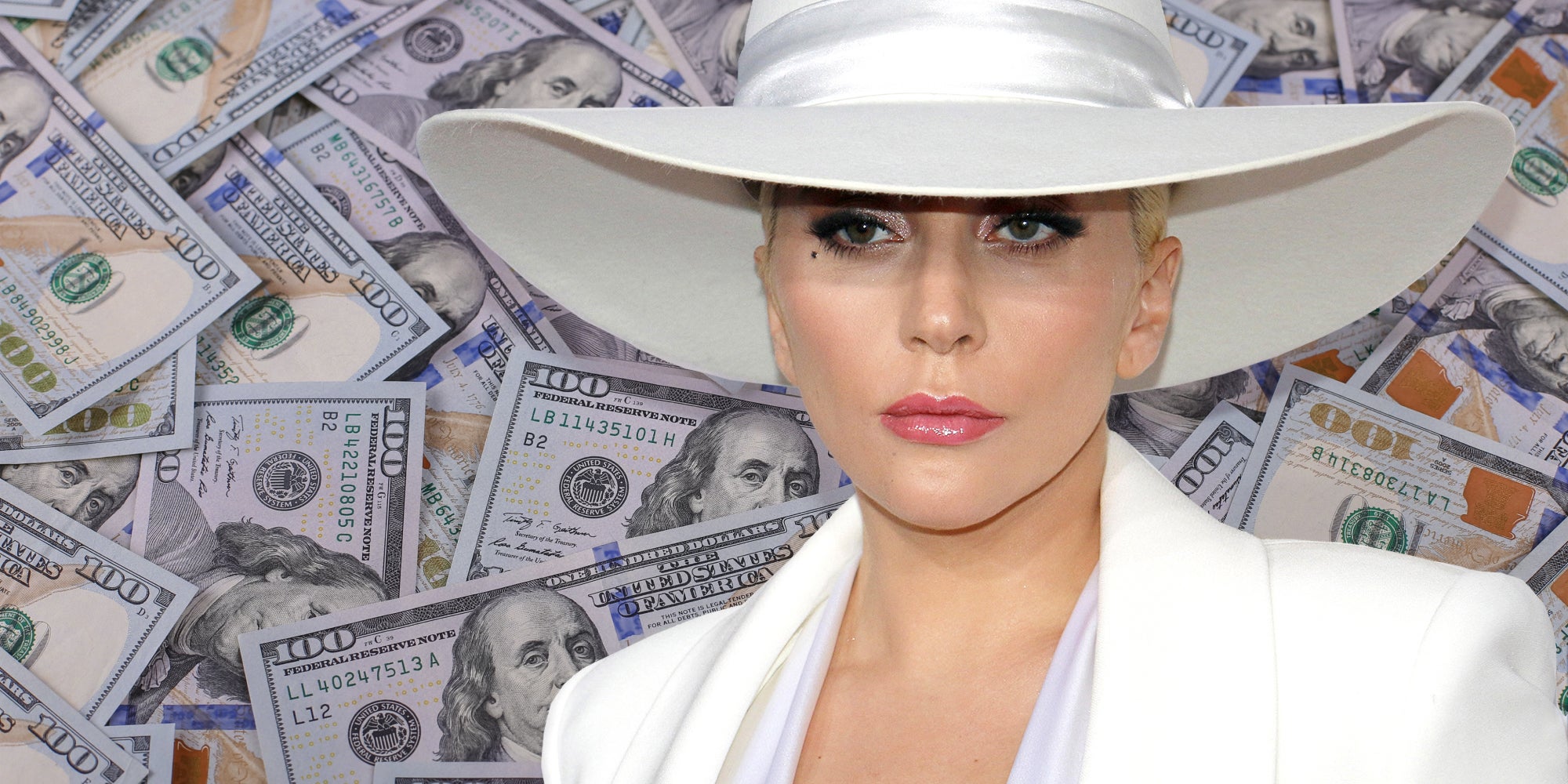In the summer of 2014, Californians were met with an unexpected spokesperson for the drought crisis: Lady Gaga.
“I had the honor of shooting my music video at California Hearst Castle,” Gaga said in a July 2014 public service announcement. “And while I was there, I learned about the necessity of water conservation during this drought. Do your part to help save water at home.”
As the Golden State grappled with one of its most severe droughts, government officials turned to the influence of celebrities and social media to amplify water conservation messages and encourage the public to take action.
But no amount of money can contend with Mother Nature.
California welcomed record precipitation in 2023 with atmospheric river storms. Areas of the dry state became flooded. Then, tropical storm Hilary hit Southern California, dropping unprecedented amounts of rain.
For the first time in three years, California has been relieved of its drought status, according to the U.S. Drought Monitor.
However, historically, California’s recovery periods from drought conditions are short-lived, and as the climate warms, the recurring drought conditions intensify.
The droughts are expected to be a recurring problem. But California’s Department of Water has already invested in water conservation education, spending at least $14 million to raise awareness and prepping the populace for the next time, according to public records obtained by the Daily Dot.
No stranger to the drought
California’s drought emergency, declared on Feb. 27, 2009, called attention to the state’s dwindling water supply. As months without rain passed and water reservoirs plummeted, concerns about the state’s water supply grew.
At the time, former Gov. Arnold Schwarzenegger urged water agencies to reduce water by 20%.
The Save Our Water program was launched by the California Department of Water Resources in 2009, with the “urgent mission objective” to utilize outreach efforts to encourage Californians to reduce water usage, according to a no-bid contract given to the Association of California Water Agencies (ACWA).
“The [Save Our Water] program will educate Californians about the state’s ongoing water supply challenges and promote conservation through public service announcements, educational outreach, and a comprehensive Web site,” the website’s first press release said.
The California Department of Water Resources partnered with the ACWA, the “largest statewide coalition of public water agencies in the country,” chosen for its reach, comprised of 460 water agencies that handle 90% of California’s water delivery system. The initial partnership agreement noted that the ACWA is “the only suitable water organization” that has the expertise and resources to perform the necessary outreach, at a “fair and reasonable” price.
“It came from the governor and through DWR and they asked us to manage it because they knew that getting the message out to individual Californians was crucial,” ACWA Director of Communications Heather Engel said. “And they knew that an effective way to do that would be through the water agencies.”
In the 10-year period, the original contract was amended six times, revising the budget for the ACWA’s outreach for the program from $750,000 to $14 million.
One of its first video series was named “Real People Real Savings,” which looked closer at California residents conserving water.
Since then, the program has grown from a relatively new initiative to an influential force in California’s water conservation messaging.
But it wasn’t until 2014 that the ACWA had its first celebrity publicly supporting the Save Our Water program, with Lady Gaga publicly standing for the cause.
Lady Gaga tells you to use less water. Are you more likely to do it?
In her “G.U.Y.” music video, Gaga sings in front of picturesque backdrops of the Hearst Castle, and, in multiple shots, swims in the Neptune Pool.
At the time of filming, the Neptune Pool was cracked, leaking 5,000 gallons of water a day. The pool was drained in early 2014 to repair plans for cracks in the pool and avoid unnecessary water use during the drought period.
Despite the leaking, Lady Gaga proceeded to refill the Neptune Pool.
To compensate for the lost water, Gaga entered an agreement to donate $250,000 to the Hearst Castle Foundation, funded a local water supply study, and filmed a public service announcement for the Save Our Water program.
Five months after the video’s debut on NBC’s Dateline, Gaga’s PSA was posted in July 2014.
Within a month of releasing Gaga’s PSA on Facebook, the California Department of Water gained 13,353 followers—the fastest monthly growth the account experienced in the past 10 years, according to monthly program summary reports from the California Department of Water obtained by the Daily Dot.
The program’s efforts were heavily focused on public outreach social media, with program summaries additionally outlining goals to “gain more followers/fans on platforms.”
From 2014 to 2018, the program’s Facebook page gained a total of 48,485 followers and 22,231 followers on Twitter, with the greatest growth in August 2014.
Its Twitter account saw a 5,074 follower increase in November 2014.
During the months with celebrity partnerships, the program’s Facebook ad post boosts cost about $4,800.
Wharton Neuroscience Initiative executive director Elizabeth “Zab” Johnson, author of a paper about the effectiveness of celebrity status in advertising, said that part of an effective celebrity endorser is that consumers and audiences will engage more, and therefore, looking at the message or product will increase. Lady Gaga’s appearance as a spokesperson for water conservation acted as a figurehead that audiences associated with value and trust.
“So I can see why this would align, not necessarily with her expertise as a show person or as a musician, but as someone who also has a platform to instrument change, through aligning other kinds of philanthropic leveraging for social good,” Johnson said.
Shortly after Gaga—and a state announcement of emergency regulations for outdoor water waste—Conan O’Brien and Andy Richter stepped in with a series of humorous public service announcements. O’Brien and Richter’s videos were posted and pushed multiple times on the Save Our Water social platforms. Videos posted on O’Brien’s YouTube channel garnered 92,000 views and 1,100 likes.
In contrast, Gaga’s 18-second video was posted once on the Save Our Water Facebook page in July, which pulled 1,800 likes and 177 comments.
In the same month, a final celebrity PSA was released: former Van Halen lead singer Sammy Hagar released his message to conserve water during the California drought. Hagar’s video was part of the “Californians Don’t Waste” PSA campaign.
“I’m a native Californian, and I don’t waste water,” Hagar said, holding a wine glass in his restaurant, El Paseo.
Johnson told the Daily Dot, “It’s not about just about pretty faces,” but also how believable the celebrities in PSAs are.
“We also respond very well to attractive people, but in this capacity, like a public service campaign, to be really maximally effective, we’d have to trust that the endorser believes in what they’re endorsing,” she said.
To extend its reach, the program also entered agreements with the Major Baseball League, promoting water conservation messages through 2015. The San Francisco Giants, San Diego Padres, and Los Angeles Angels all created public service announcements for the campaign to encourage fans to reduce water use.
The Angels Baseball LP received a $40,000 sponsorship from the ACWA. Fans gained exposure to the water conservation messages with the Save Our Water logo and message showcased on their Big A LED sign during games.
The San Diego Ballpark Funding accepted $37,20 in a partnership with the ACWA, agreeing to help with water conservation efforts by cutting back water use. By not maintaining the playing field in Petco Park during the offseason, the Padres said to conserve 288,000 gallons of water, according to previous news coverage.
The drought continues
The program also allocated funds towards educational programs that turned into “deliverables” in conference booths, presentations, and webinars.
“The overarching goal of the SOW program is to achieve a permanent change in public attitude and behavior toward water use,” according to the Save Our Water project description.
Throughout the partnership between the ACWA and the California Department of Water, the initial contract underwent six amendments, each time revising calculations for time and money-related efforts towards the program. In particular, amendments made in 2015 experienced the highest increase in budget ceilings.
In 2015, the rationale for the $4 million increase in outreach spending for the ACWA, financed by California’s emergency funds, was backed by an emergency proclamation made by Brown at the time. The lack of precipitation and “dismally meager snowpack” called for further urgency on California’s drought and the ACWA’s contract spending ceiling.
While the program’s budgeting continued to increase, after the 2015 budgeting change, money allocated for outreach efforts after each amendment decreased.
Despite the increase in budgeting that year, spending on social media and external partnerships decreased in the years following, with an exception in 2015, when San Francisco Giants Sergio Romo agreed to film a PSA for the campaign.
“This would achieve a permanent change in public attitude and behavior toward water use and will continue to fulfill Governor [Jerry] Brown’s State of Emergency Proclamation issued January 17, 2014,” the amendment to the contract amount said. “The goals and purposes of this agreement cannot be accomplished through the regular civil service system.”
The contract was prolonged until 2017 when the California Department of Water took over managing the program’s outreach.
In 2018, California officially declared an end to the drought emergency, but the relief was only temporary. Drought conditions resurfaced in 2020.
Concerns about water scarcity were reintroduced and despite atmospheric storm events in California during 2022 and 2023, drought conditions and water conservation efforts continue.
It wasn’t until March 23, 2023, after heavy rains, that Newsom’s drought restrictions were eased. Two years prior, Newsom asked people to voluntarily cut water use by 15%.
In the past 15 years, California’s prolonged drought periods have heavily impacted the environment and the people living in the state– water efficiency messaging changing alongside community views on conserving water.
“If you look at the water use figures from way back and when the campaign started over time, if you look at the daily use for the average Californian, it’s reduced tremendously. I think the messaging has evolved over time and I think that’s something that’s really smart of the campaign to evolve,” Engel from the ACWA said.
The average California resident used 108 gallons per day in 2014. Now, nine years later, the average resident uses 65 gallons of water per day.
“I think Californians are a lot smarter today than two or three droughts ago,” Engel added. “I think Californians understand now that water efficiency is something that has to happen permanently.”






